Nine astonishing places to see Van Gogh’s paintings – The Art Newspaper
Most Van Gogh paintings in public collections are just where you might expect to see them, in major art galleries and the museum devoted to the artist in Amsterdam. But there are some pictures which have ended up in surprising or unexpected places. Here, we single out nine.
Many are off the beaten track, so do check that the Van Goghs will be on display before travelling. And, as explained in entry number nine, you would be very lucky to see Cairo’s Van Gogh.
1. Hakone (Japan)
Pola Museum, Hakone and Van Gogh’s Flower Vase with Thistles (June 1890)
Pola Museum, Hakone
The Pola Museum is in Hakone, a forested area of great beauty 100 kilometres west of Tokyo. The journey to the museum by public transport is partly by a vertiginous mountain railway. Visitors then descend into the dramatically designed museum through a glass-enclosed escalator to reach the underground galleries. The architect was Nikken Sekke. Opened in 2002, the museum was funded by the Pola cosmetics company.
The museum has three Van Gogh paintings, including The Gleize Bridge over the Vigueirat Canal (March 1888) and Flower Vase with Thistles (June 1890). There is a special reason to go this year: an exhibition on Van Gogh’s influence on Japanese artists will open shortly, The Impact of Van Gogh: A Renewal of Passion (31 May-30 November).
2. Vatican
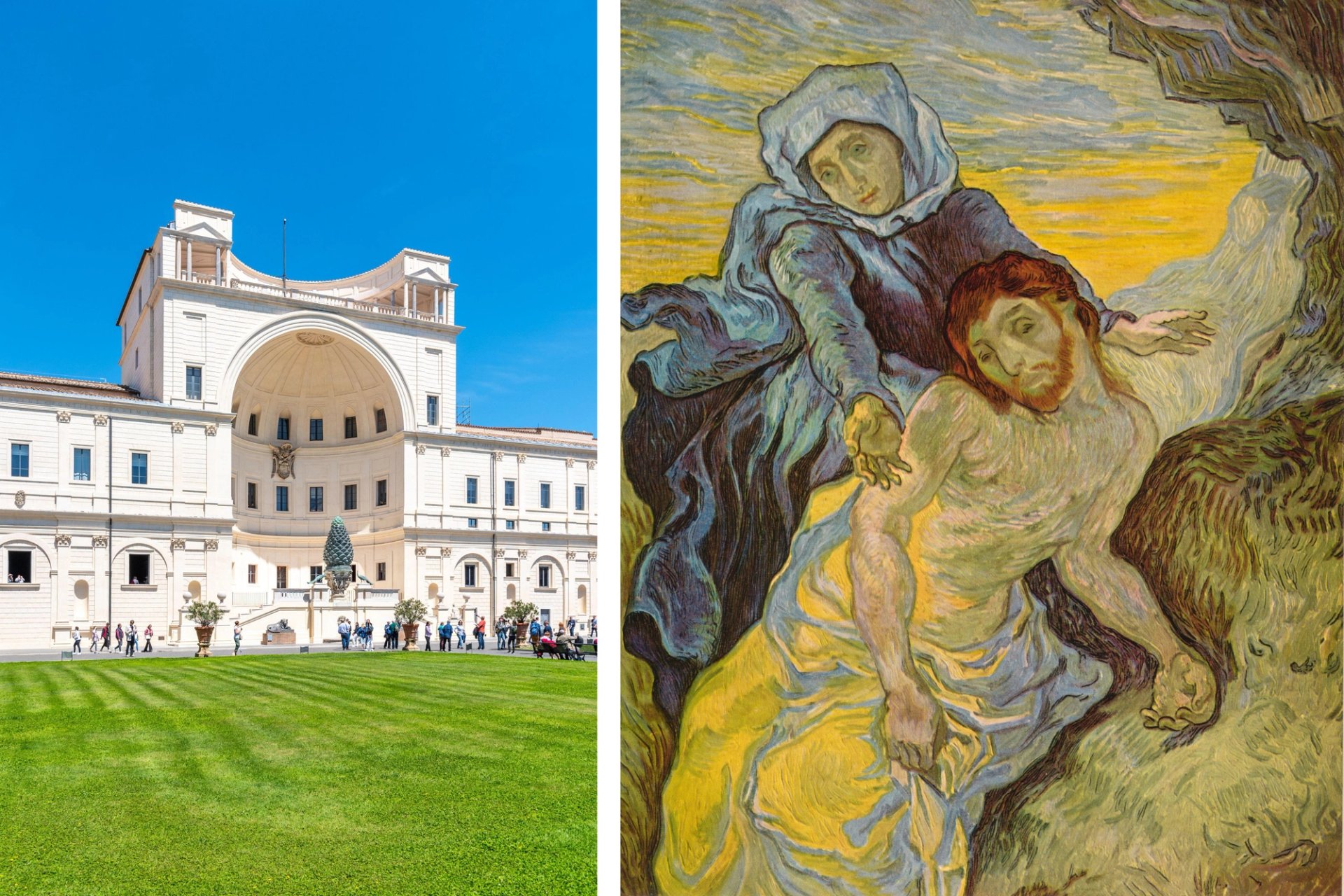
Collection of Modern and Contemporary Art, Vatican and Van Gogh’s Pièta (after Delacroix) (September 1889)
pytyczech / Alamy Stock Photo. Antiquarian Images / Alamy Stock Photo
The Vatican Museums is renowned for their Renaissance masterpieces, but the institution also has a collection of Modern and Contemporary Art in its complex of historic buildings.
Among the paintings is Van Gogh’s Pièta, which was inspired by a print by the French artist Eugène Delacroix (there is another painted version at Amsterdam’s Van Gogh Museum). Depicting the dead Christ with the grieving Virgin, it was donated by the Catholic Archdiocese of New York in 1973, for the creation of the museum.
3. Honolulu
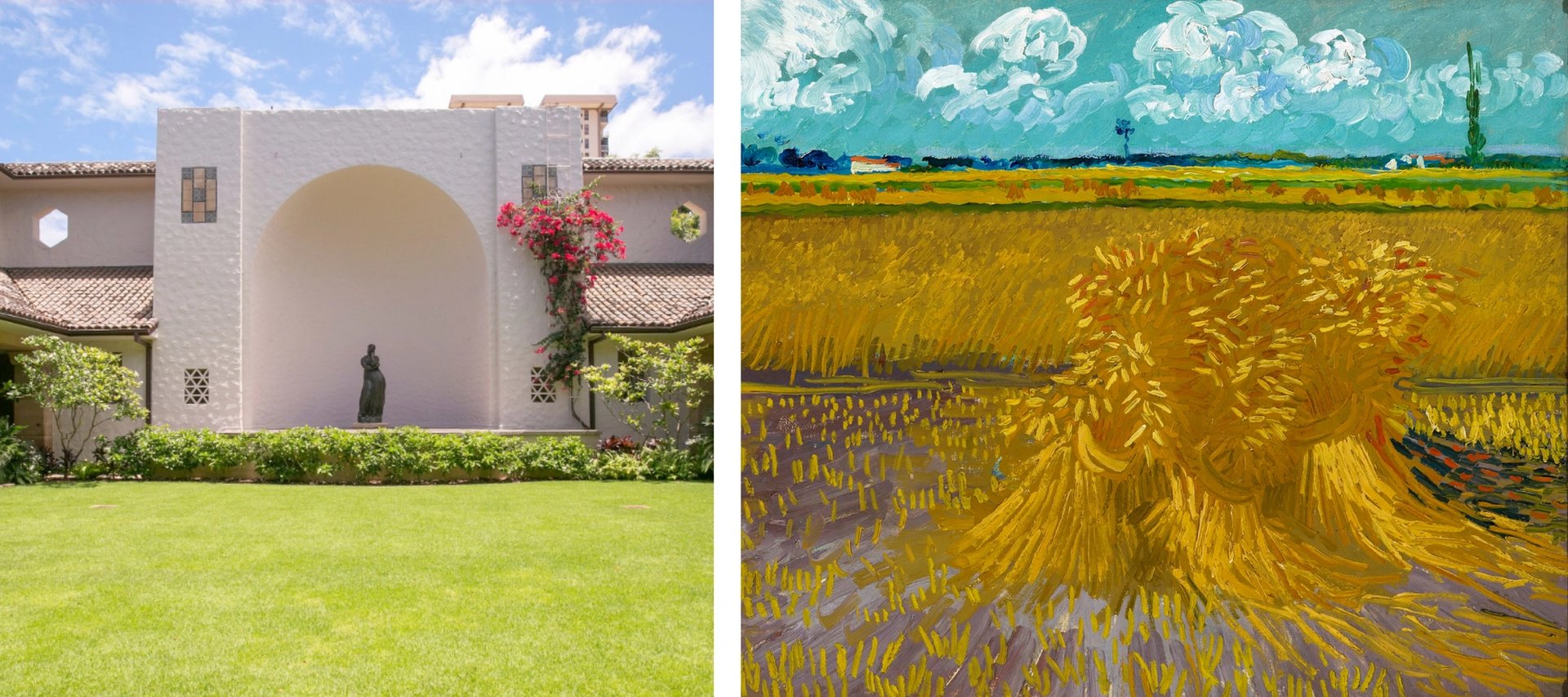
Honolulu Museum of Art and Van Gogh’s Wheat Field (June 1888)
Honolulu Museum of Art
Hawaii might usually be associated with tropical beaches, but it also hosts the Honolulu Museum of Art. Opened in the city centre back in 1927, it is renowned for its collection of Pacific and Asian art.
Honolulu has just one Van Gogh, but it is a very fine harvest scene painted in Arles: Wheat Field (June 1888). It was donated in 1946 by the Cooke family, who established the museum.
4. Warsaw
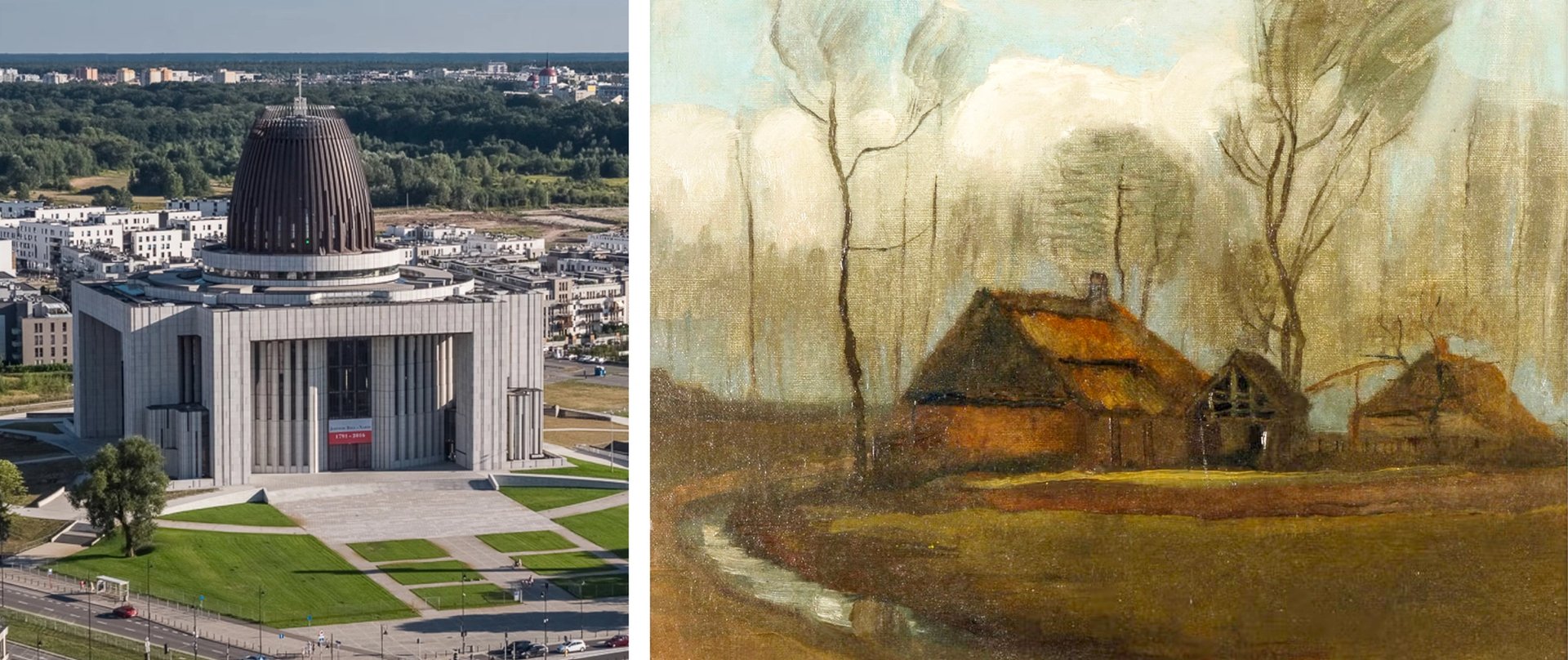
Museum of John Paul II and Primate Wyszyński in the Temple of Divine Providence, Warsaw and Van Gogh’s Country Huts among Trees (September 1883)
Archiwum Centre of Divine Protection, Warsaw and Museum of John Paul II and Primate Wyszynsk, Warsaw, with the Van Gogh on loan from the Archdiocese of Warsaw
Poland’s only Van Gogh has recently gone on display in a room 26 metres above the ground in the dome of Warsaw’s Temple of Divine Providence, which was inaugurated in 2016. The temple provides space for the Museum of John Paul II and Primate Wyszynski.
The Van Gogh is Country Huts among Trees (September 1883), which was donated in 1987 to the Archdiocese of Warsaw by the Polish-born British collector Charles Carroll-Porczynski, a scientist who made his fortune in the chemical industry. Catch the current Van Gogh display quickly, since it closes on 27 April. After that the painting will go on loan to the Family Home of John Paul II in the town of Wadowice, near Krakow. The house became a museum, run by the Sisters of the Holy Family of Nazareth, in 2014, nine years after the death of the Polish pope.
5. Tokyo
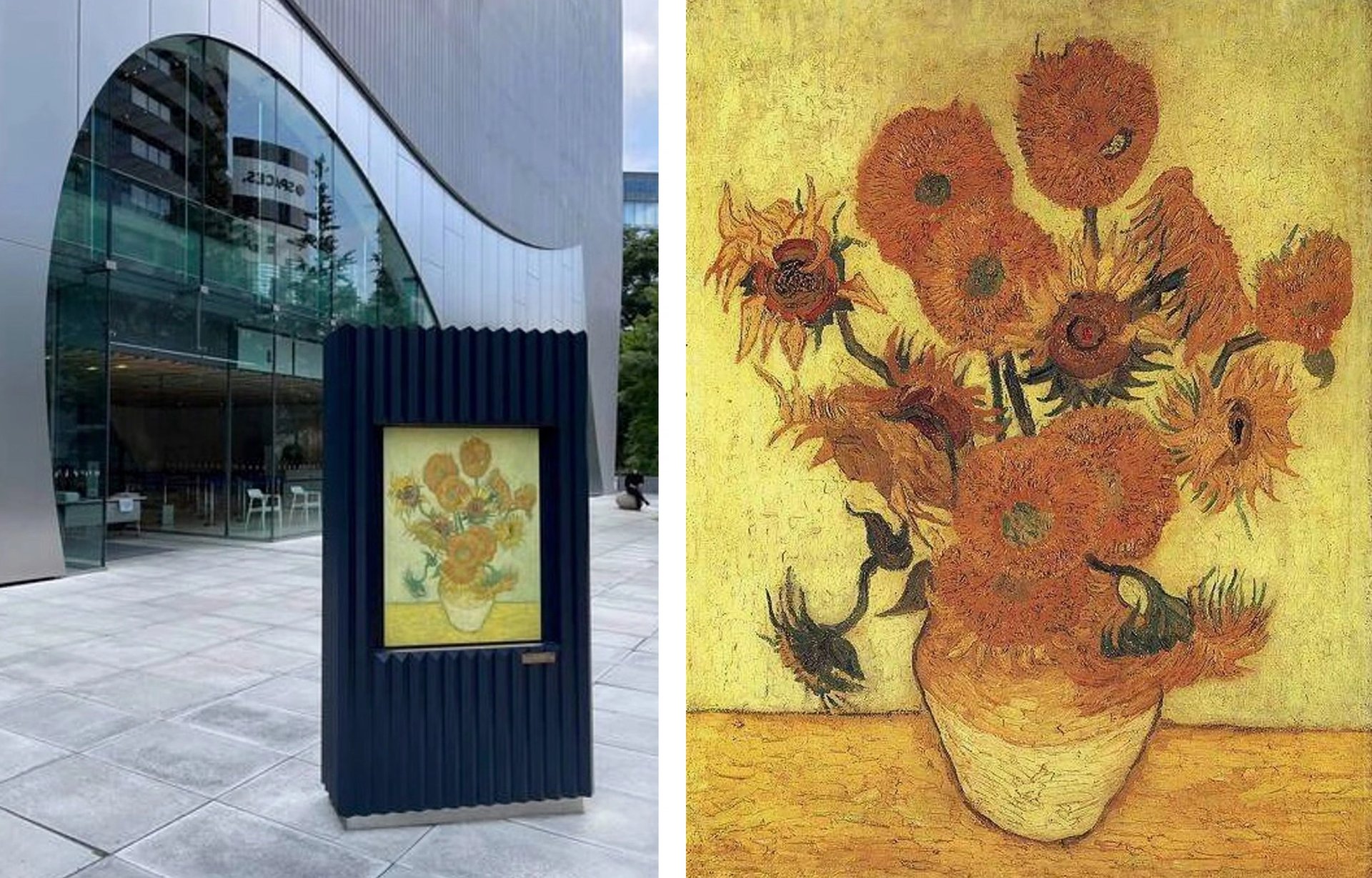
Sompo Museum, Tokyo and Van Gogh’s Sunflowers (December 1888-January 1890)
Sompo Museum, Tokyo
One of Van Gogh’s iconic Sunflower paintings is owned by a Japanese company, Sompo insurance. The painting was originally displayed in a gallery on the 42nd floor of its corporate headquarters in Tokyo, with dramatic views over the city. In 2020 a new building was constructed with street access for the Sompo Museum of Art.
Sunflowers (December 1888-January 1889) was bought by Yasuda insurance, which was later incorporated into Sompo. In 1989, when it was acquired at Christie’s for £25m, it was by far the most expensive artwork ever sold at auction.
6. Otterlo (Netherlands)
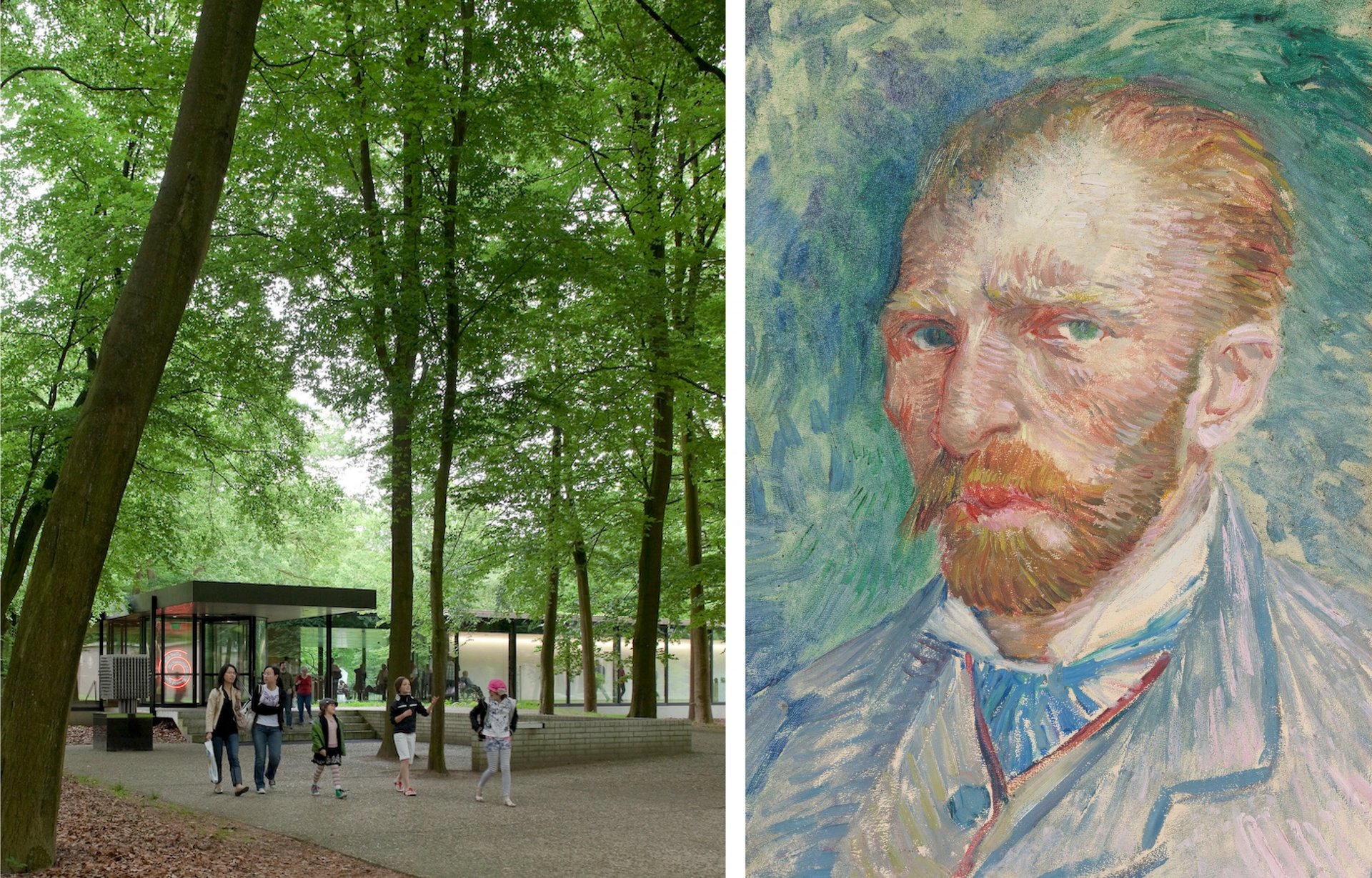
Kröller-Müller Museum, Otterlo and Van Gogh’s Self-portrait (April-June 1887)
Kröller-Müller Museum, Otterlo (photographs by Jannes Linders and Rik Klein Gotink)
The existence of the Kröller-Müller Museum will not come as a surprise to Van Gogh aficionados, but those who have never visited it may not be aware of its unusual setting. Located 80 kilometres east of Amsterdam, it sits in the middle of a national park. The nearest village, Otterlo, is three kilometres away. The original building, designed by Henry van de Velde and opened in 1938, has marvellous views of the surrounding heathland.
It is more than worth the trek for its superlative Van Gogh collection, which was amassed by Helene Kröller-Müller between 1908 and 1922. During that time she acquired no fewer than 88 paintings and 172 drawings, making it by far the second greatest collection of the artist’s works after that of Amsterdam’s Van Gogh Museum. The important works include a self-portrait (April-June 1887) and Café Terrace at Night (September 1888). Take care when you visit: much of the collection is being lent to exhibitions in Japan from September 2025 to August 2026, although a significant number of paintings will remain behind and on display. Van Gogh drawings are only displayed occasionally, for conservation reasons.
7. Hiroshima (Japan)
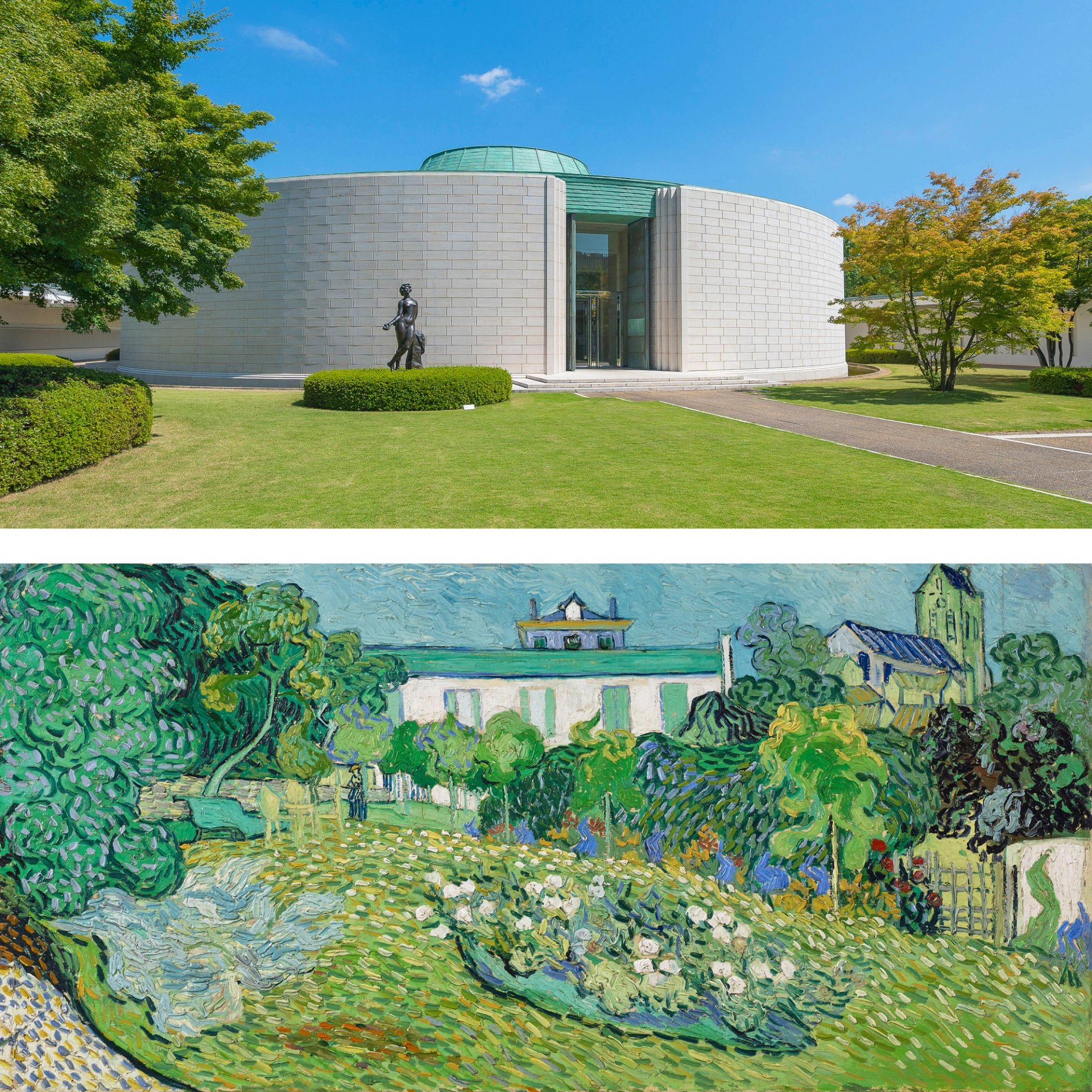
Hiroshima Museum of Art and Van Gogh’s Daubigny’s Garden (July 1890)
Hiroshima Museum of Art
Hiroshima has one of the finest art galleries in Japan, created to mark the city’s rejuvenation after its terrible destruction from the atomic bomb. Funded by the Hiroshima Bank, the museum opened in 1978 under the slogan “for love and peace”. The Hiroshima Museum of Art’s dome is modelled on the Atomic Bomb Dome, the isolated survival amid catastrophic losses.
Hiroshima’s Van Gogh is one of the artist’s last works, Daubigny’s Garden (July 1890), painted in Auvers-sur-Oise (there is another version on long-term loan to the Kunstmuseum Basel). The picture was bought by the Hiroshima Bank from the widow of New York banker Siegfried Kramarsky in 1974. In a conscious effort to match the hues of Daubigny’s Garden, green was later adopted as the museum’s symbolic colour, and incorporated into its logo.
8. São Paulo
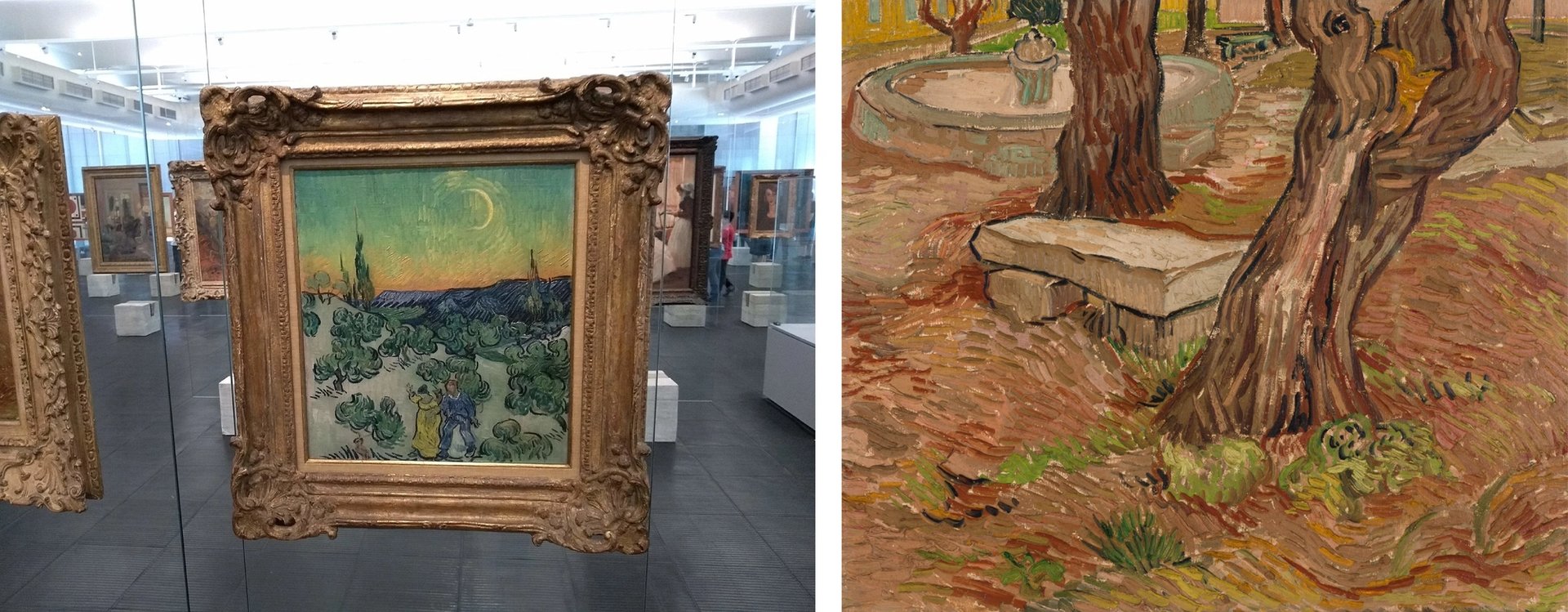
Museu de Arte de São Paulo and Van Gogh’s The Stone Bench in the Asylum at Saint-Rémy (November 1889)
Museu de Arte de São Paulo Assis Chateaubriand (painting MASP.00115, photograph Isabella Matheus)
Only two cities in South America have Van Goghs: the art museums in Buenos Aires (one painting) and São Paulo (four). What makes the Museu de Arte de São Paulo unusual is its architecture, and more specifically its display. Instead of hanging on walls, paintings are placed in rows on the gallery floors, mounted on what the museum calls “crystal easels”—glass stands on concrete bases. This unique design was introduced by the Italian-born Brazilian architect Lina Bo Bardi when the building opened in 1968.
São Paulo’s four Van Goghs include The Stone Bench in the Asylum at Saint-Rémy (November 1889). It depicts the garden where the artist would retreat to work and relax, escaping from those with whom he shared the asylum. The painting was bought for the museum’s collection in 1954.
9. Cairo
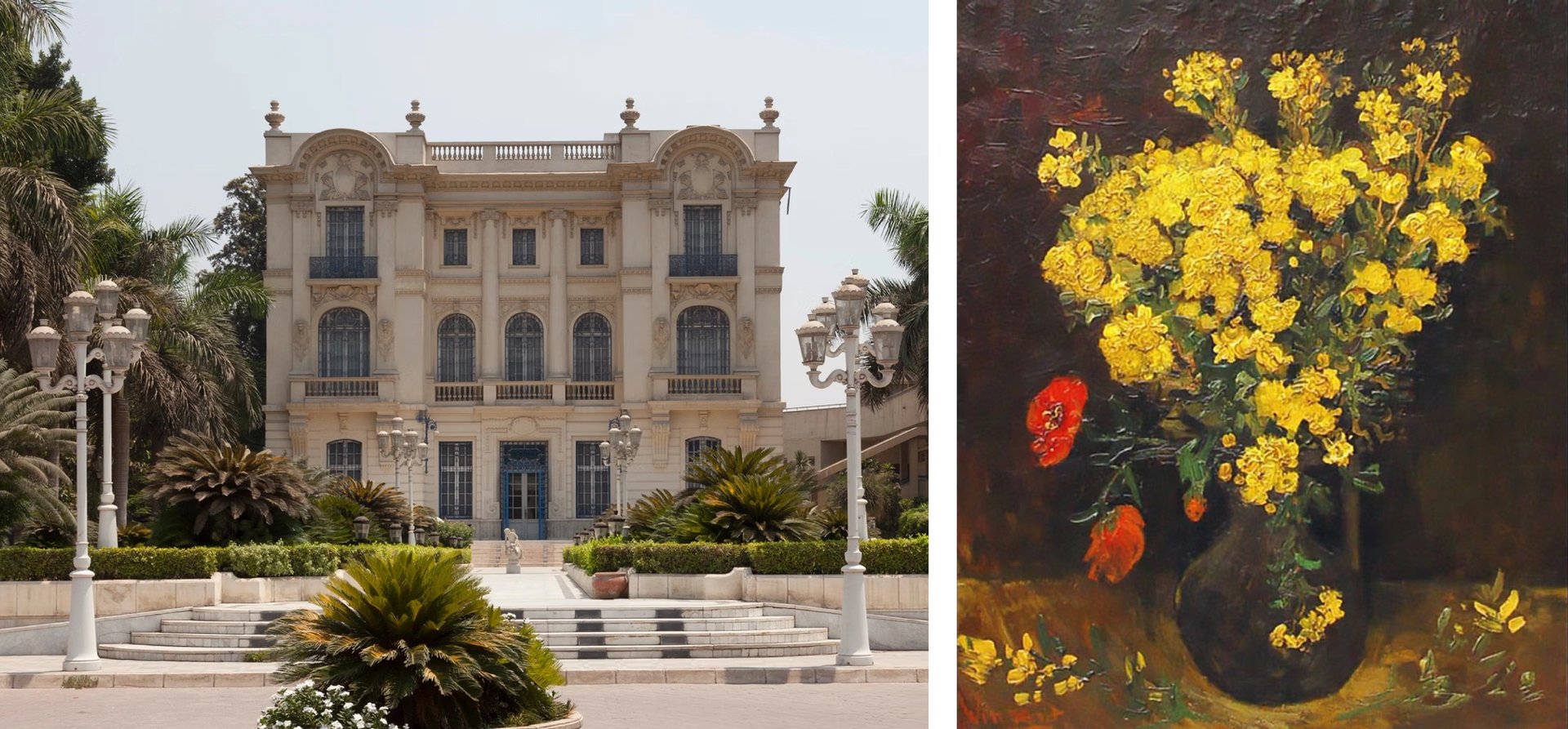
Khalil Museum, Cairo and Van Gogh’s stolen Vase with Flowers (Summer 1886)
Photograph of building by Roland Unger
The Khalil Museum is one of Cairo’s surprises, housing a magnificent collection of Impressionist and Post-Impressionist paintings. It was set up by Mohamed Mahmoud Khalil, who inherited great wealth and was a frequent visitor to Paris, where he bought what became the most important private collection of French Impressionism in Africa. He built his mansion (now the museum) by the Nile in 1915. After serving as Egypt’s minister for agriculture and president of the senate, Khalil died in 1953.
Sadly, this is the one place in our survey where, for the moment, you will not be able to see a Van Gogh. Khalil’s Vase with Flowers (Summer 1886) has been stolen twice. The first time was in 1978, with the still life being recovered two years later after surfacing in Kuwait. The second theft was in 2010 and it is one of the few stolen Van Goghs that remains unrecovered. But even without the Vase with Flowers, it is a fascinating museum to visit, with over a hundred French paintings hung in Khalil’s Nile-side villa.
Martin Bailey is a leading Van Gogh specialist and special correspondent for The Art Newspaper. He has curated exhibitions at the Barbican Art Gallery, Compton Verney/National Gallery of Scotland and Tate Britain.
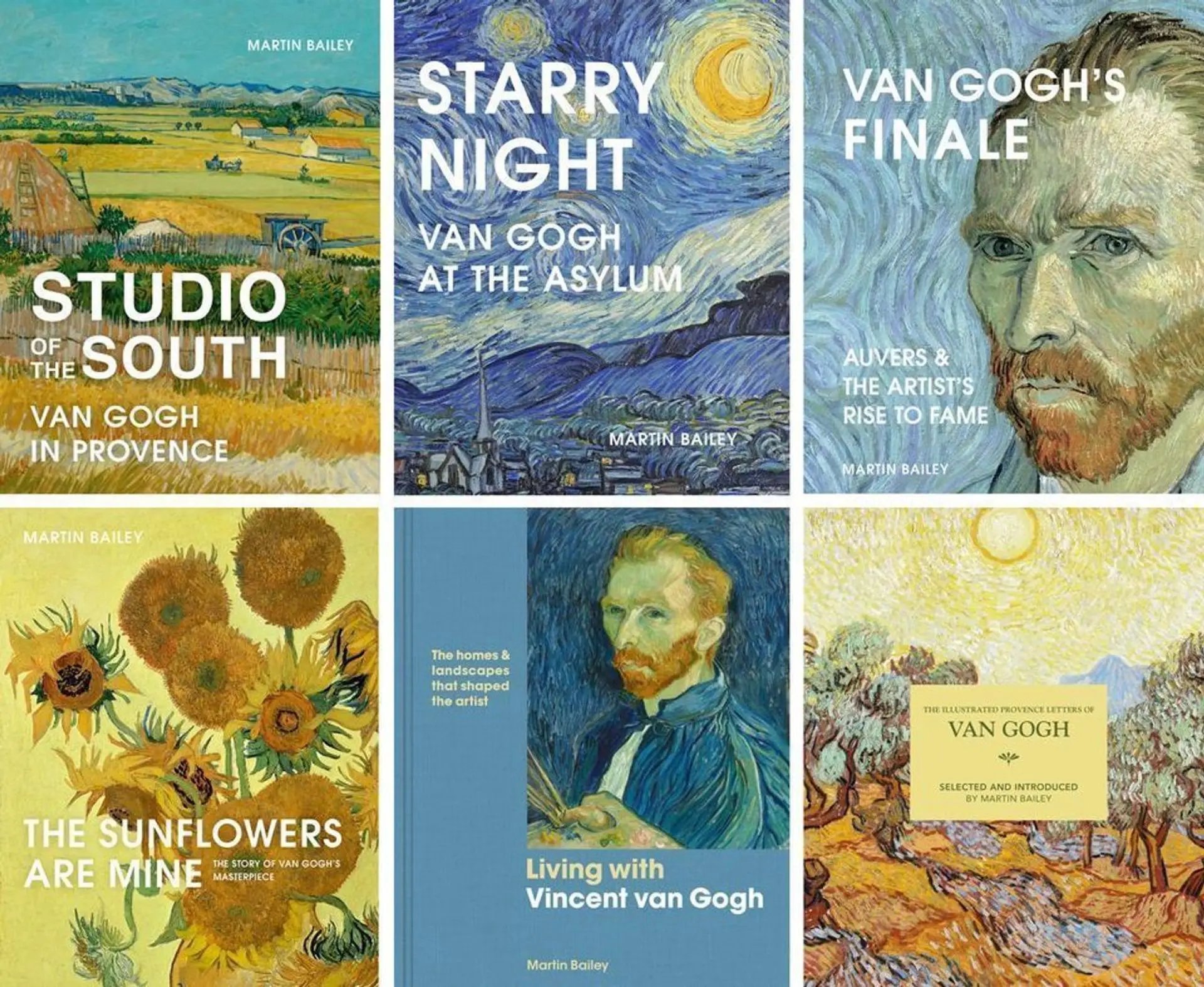
Martin Bailey’s recent Van Gogh books
Martin has written a number of bestselling books on Van Gogh’s years in France: The Sunflowers Are Mine: The Story of Van Gogh’s Masterpiece (Frances Lincoln 2013, UK and US), Studio of the South: Van Gogh in Provence (Frances Lincoln 2016, UK and US), Starry Night: Van Gogh at the Asylum (White Lion Publishing 2018, UK and US) and Van Gogh’s Finale: Auvers and the Artist’s Rise to Fame (Frances Lincoln 2021, UK and US). The Sunflowers are Mine (2024, UK and US) and Van Gogh’s Finale (2024, UK and US) are also now available in a more compact paperback format.
His other recent books include Living with Vincent van Gogh: The Homes & Landscapes that shaped the Artist (White Lion Publishing 2019, UK and US), which provides an overview of the artist’s life. The Illustrated Provence Letters of Van Gogh has been reissued (Batsford 2021, UK and US). My Friend Van Gogh/Emile Bernard provides the first English translation of Bernard’s writings on Van Gogh (David Zwirner Books 2023, UKand US).
To contact Martin Bailey, please email [email protected]
Please note that he does not undertake authentications.
Explore all of Martin’s adventures with Van Gogh here




